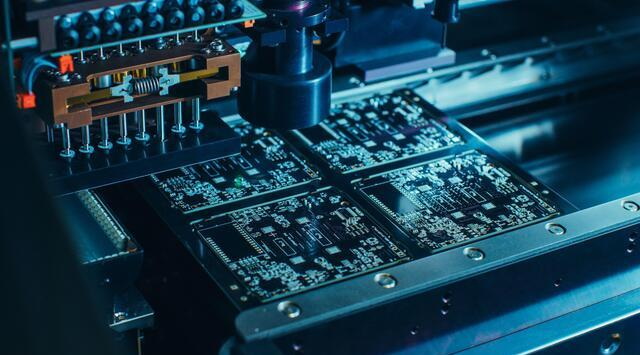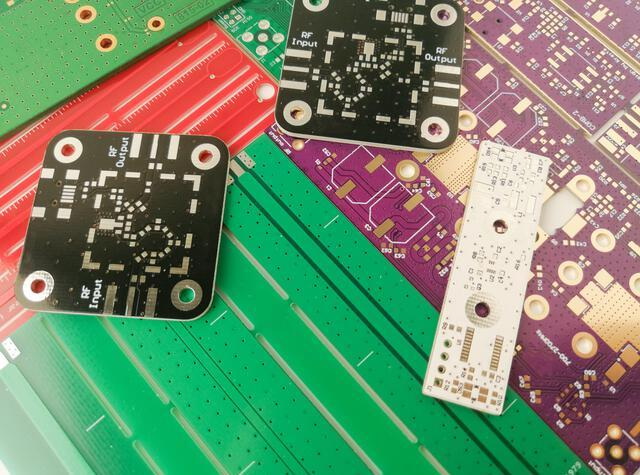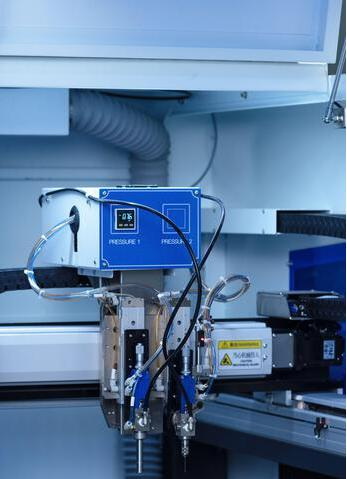Content Menu
● Introduction
● What is an SMT Production Line?
>> Key Characteristics of SMT Production Lines
● Key Components of an SMT Production Line
>> 1. SMT Stencil Printer
>> 2. Pick and Place Machine
>> 3. Solder Paste Mixer
>> 4. Reflow Soldering Oven
>> 5. Automatic Optical Inspection (AOI) Machine
>> 6. Cleaning Machine
>> 7. SPI Machine (Solder Paste Inspection)
>> 8. PCB Transport Systems
>> 9. Docking Station
>> 10. SMT Unloader
● Advantages of Using an SMT Production Line
● Common Challenges in SMT Production Lines
● Innovations in SMT Technology
● Conclusion
● FAQs
>> 1. What is the purpose of an SMT stencil printer?
>> 2. How does a pick-and-place machine work?
>> 3. What is reflow soldering?
>> 4. Why is AOI important in SMT production?
>> 5. What are the benefits of PCB transport systems?
● Citations:
Introduction
Surface Mount Technology (SMT) production lines are essential in the modern electronics manufacturing landscape. These lines facilitate the assembly of printed circuit boards (PCBs) with high speed and precision, significantly impacting the efficiency and reliability of electronic devices. This article delves into the key components of an SMT production line, their functions, and their importance in the manufacturing process.

What is an SMT Production Line?
An SMT production line is a sophisticated system designed to assemble electronic components onto PCBs. Unlike traditional through-hole technology, SMT utilizes surface-mounted components, which offer several advantages, including reduced size, higher reliability, and lower manufacturing costs. The automation inherent in these lines enhances production speed and quality control.
Key Characteristics of SMT Production Lines
- High Density: SMT allows for a greater number of components to be placed on a PCB due to its compact design.
- Cost Efficiency: The reduction in material usage and labor costs contributes to lower overall production expenses.
- Reliability: Surface-mounted components generally exhibit better performance and durability compared to their through-hole counterparts.
Key Components of an SMT Production Line
1. SMT Stencil Printer
The SMT stencil printer is the first critical machine in the production line. It applies solder paste onto the PCB using a screen printing process. This step is crucial as it ensures accurate solder paste deposition, which is vital for effective component soldering.
2. Pick and Place Machine
The pick and place machine is often regarded as the heart of the SMT production line. It employs advanced robotics to accurately position surface-mounted devices (SMDs) onto the PCB pads. High-speed placement machines can handle various component sizes and types, ensuring precise placement with minimal errors.
3. Solder Paste Mixer
A solder paste mixer is essential for achieving uniform consistency in solder paste before application. It mixes solder powder with flux to create a homogeneous paste that enhances printing quality and reflow performance.
4. Reflow Soldering Oven
After component placement, the PCB moves to the reflow soldering oven. This machine heats the solder paste to create reliable electrical connections between components and the PCB. Advanced ovens feature multiple temperature zones that gradually heat the board, ensuring optimal soldering conditions.
5. Automatic Optical Inspection (AOI) Machine
The AOI machine inspects PCBs for defects such as misaligned components or poor solder joints. Utilizing high-resolution cameras and sophisticated software, AOI systems perform quality control checks that are vital for maintaining product reliability.
6. Cleaning Machine
A cleaning machine removes excess flux and debris from PCBs after soldering. Ensuring cleanliness is critical for preventing corrosion and ensuring proper functionality of electronic devices.
7. SPI Machine (Solder Paste Inspection)
The SPI machine checks the thickness, area, and volume distribution of solder paste on PCBs after printing. This inspection step helps identify potential issues before components are placed, reducing defects during assembly.
8. PCB Transport Systems
PCB transport systems facilitate efficient movement between machines in an SMT production line. These automated systems minimize handling errors and maintain workflow efficiency by ensuring that PCBs are seamlessly transferred from one stage to another.

9. Docking Station
A docking station serves as a connection point between different machines in the SMT line, allowing for coordinated operation and data transfer between various equipment.
10. SMT Unloader
The SMT unloader receives and stores PCBs after reflow soldering, preparing them for final inspection or packaging.
Advantages of Using an SMT Production Line
Implementing an SMT production line offers numerous benefits:
- Increased Production Speed: Automation allows for rapid assembly compared to manual methods.
- Higher Precision: Advanced machinery ensures accurate component placement, reducing defects.
- Scalability: SMT lines can be easily scaled to accommodate increasing production demands without significant infrastructure changes.
- Cost Efficiency: Reduced labor costs and material waste contribute to lower overall production costs.
- Enhanced Reliability: Surface-mounted components typically result in more robust electronic assemblies with improved performance.
Common Challenges in SMT Production Lines
Despite their advantages, SMT production lines face several challenges:
- Component Placement Accuracy Issues: Misalignment during placement can lead to electrical failures or short circuits. Regular maintenance of placement machines is essential to mitigate this risk.
- Solder Defects: Issues such as cold joints or bridging can compromise electrical connections. Proper soldering parameters must be maintained to minimize these defects.
- Inspection Difficulties: The complexity of densely packed circuits can make inspection challenging. Advanced techniques like automated optical inspection (AOI) and X-ray inspection are crucial for detecting hidden defects.
- Component Damage: Electrostatic discharge (ESD) or improper handling can damage sensitive components during assembly. Implementing ESD prevention measures is vital for protecting these parts.
Innovations in SMT Technology
The field of Surface Mount Technology continues to evolve with innovations aimed at enhancing efficiency and quality:
- Miniaturization: Advances allow for smaller components that take up less space on PCBs while maintaining functionality.
- Automation and Robotics: Increased use of robotics in manufacturing processes improves speed and reduces human error.
- Advanced Inspection Technologies: High-resolution cameras and machine learning algorithms enhance defect detection capabilities.
- Smart Manufacturing Practices: The integration of IoT technologies provides real-time insights into manufacturing processes, enabling predictive maintenance and workflow optimization.
- Green Manufacturing Initiatives: Sustainable practices are being adopted within SMT processes to reduce environmental impact while meeting consumer demands for eco-friendly products.
Conclusion
In summary, an SMT production line comprises several key components that work together to assemble electronic devices efficiently and reliably. Understanding these components—such as stencil printers, pick-and-place machines, reflow ovens, AOI machines, cleaning systems, SPI machines, transport systems, docking stations, and unloaders—is crucial for optimizing manufacturing processes in electronics production. As technology advances, manufacturers must stay abreast of innovations that enhance productivity while addressing challenges inherent in SMT assembly.

FAQs
1. What is the purpose of an SMT stencil printer?
The SMT stencil printer applies solder paste onto the PCB, ensuring precise placement for component attachment.
2. How does a pick-and-place machine work?
The pick-and-place machine uses robotic arms to position components onto the PCB with high accuracy.
3. What is reflow soldering?
Reflow soldering is a process where solder paste is heated to bond components securely to the PCB.
4. Why is AOI important in SMT production?
AOI ensures quality control by detecting defects in component placement and soldering before products leave the assembly line.
5. What are the benefits of PCB transport systems?
PCB transport systems ensure efficient movement between machines, reducing handling errors and maintaining a smooth production flow.
Citations:
[1] https://www.quick-pcba.com/the-main-equipment-in-an-smt-line/
[2] https://www.allsmt.com/SMT-line-concept-assembly-manufacturing-production-Assembly
[3] https://www.viasion.com/blog/smt-assembly-and-its-advantages/
[4] https://www.raypcb.com/surface-mount-technology/
[5] https://www.viasion.com/blog/common-challenges-in-smt-assembly-and-solutions/
[6] https://www.raypcb.com/smt-lines/
[7] https://www.pcbasic.com/blog/smt_production_line.html
[8] https://levisonenterprises.com/5-advantages-to-using-smt/
[9] https://www.verifiedmarketreports.com/blog/top-7-trends-in-surface-mount-technology-smt-equipment/
[10] https://www.andwinmcpcb.com/smt-production-process-common-issues-and-challenges/




















